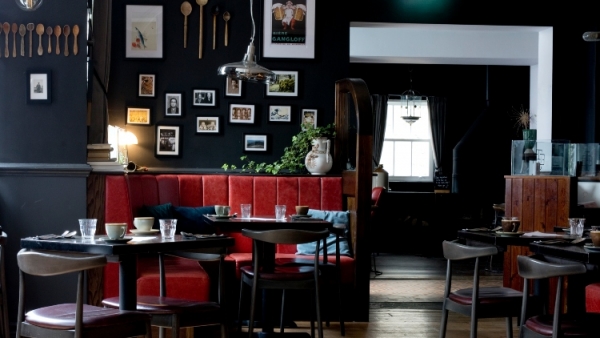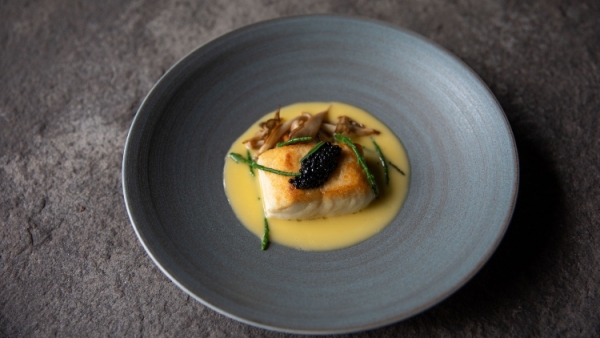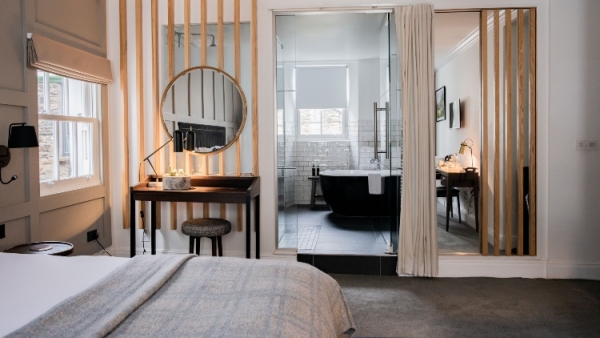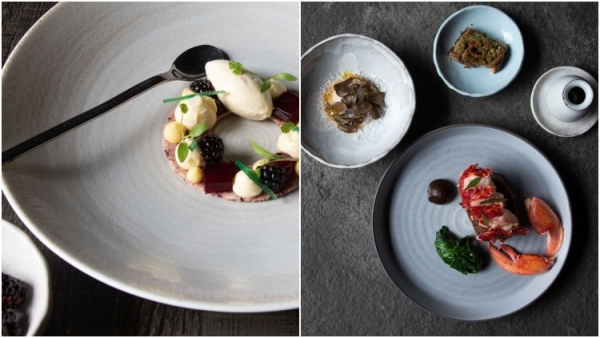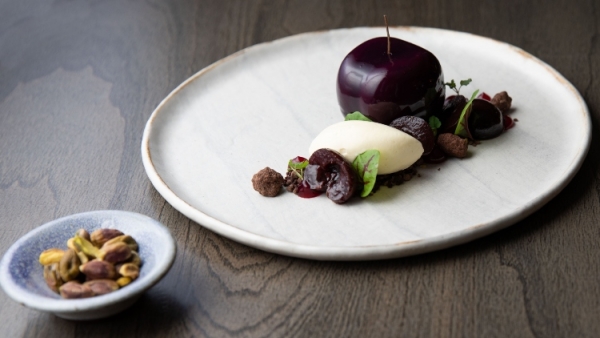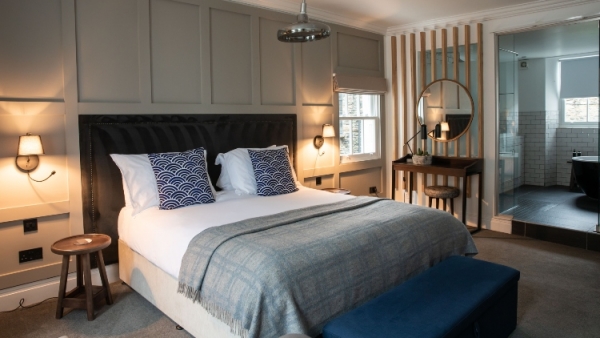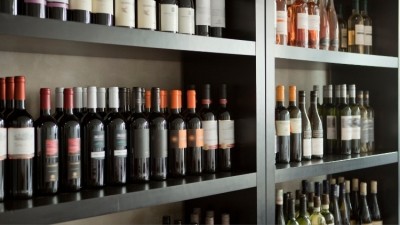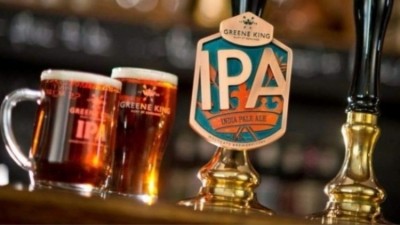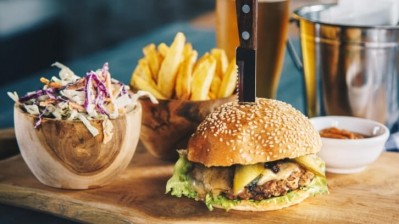MY PUB
My Pub: the Black Bull, Sedbergh, Cumbria
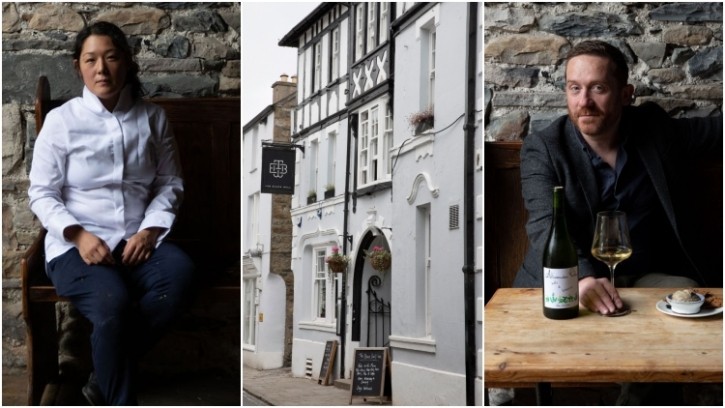
Facts ’n’ stats
Pub name: the Black Bull
Address: 44 Main Street, Sedbergh, Cumbria, LA10 5BL
Owners: husband and wife co-owners James Ratcliffe and Nina Matsunaga
Website: https://www.theblackbullsedbergh.co.uk
It was a finalist in the Great British Pub Awards 2023 in the category of Best Country/Rural Pub and has secured a place in Top 50 Gastropubs 2024, which will finalised later this month on 22 January.
Here, James Ratcliffe, co-owner of the pub tells The Morning Advertiser about its offer, which doesn’t end with food because it is also strong on accommodation and its drinks.
The pub
The Black Bull Inn is in the Western Dales part of Cumbria, is a free-of-tie country Inn, which is co-owned by myself and my wife Nina Matsunaga.
We serve food with a focus on local, seasonal produce with our own unique twist.
The Black Bull holds two AA rosettes for culinary excellence, is an Estrella Damm Top 50 gastropub and has received critical acclaim from both Jay Raynor and Marina O’Loughlin.
Head chef Nina has been nominated for several awards over the years, including being presented with Pub Restaurant Chef of the Year by the Craft Guild of Chefs.
I head the front of house team and am also the head sommelier, with a list that recently featured in two categories of the Star Wine Awards.
Upstairs there are 18 en-suite guest bedrooms, each is subtly distinctive, varying in sizes mainly due to the quirks of the building, each with various features, some have balconies overlooking Winder, the fell to the rear of the inn, another has a Japanese soaking tub, while several have glass bathrooms.
They’re as individual as each of the Howgill Fells each takes its name from. We’ve deliberately kept each room design modern with a few simple twists, but each is furnished with locally sourced and hand-crafted artisan crockery, throws and blankets, toiletries, and artworks.
Hidden at the back of the Inn is a huge garden, which is sometimes home to Nina’s two Tamworth pigs. Literally feeding the garden, which seats 150 covers is the stables, it’s a pretty impressive space, which includes a full bar, with its own cellar, which sits in the original cobbled stables, alongside a kitchen area with huge Gozney wood-fired pizza oven, and locally crafted blacksmith-made barbecue, spit and open fire cooking area, which allows us to be pretty creative with the food we serve.
The garden itself is left to grow slightly wild, that’s mainly to encourage as much wildlife as possible, something Nina’s very passionate about. Handily, it’s a bit of suntrap too capturing the sun all day long, which works really well for everyone.
The publican
Like many, I started my career in hospitality when I was studying at university – in my case it was Manchester.
I found I had a real passion for the industry. I worked in both front and back of house during my time at uni for various independents and chain restaurants.
Nina, born in Germany to Japanese parents, studied culinary arts in London and went to do a master’s in food policy under the famous Tim Lang. This is where her passion for food politics and sustainability really began.
Nina and I met when she came up to visit Manchester and check out the growing street food scene, she was studying in London at the time, and I was running a gastropub in the city centre, we hit it off and things went from there.
We started our first ever business – The Moocher – in 2011, which focused on Foraged & Rare breed produce, which we served at street food events, farmers’ markets and outside catering jobs we secured around Manchester, Cheshire and Lancashire.
Off the back of that success we decided to head to Sedbergh, close to where I grew up, and open The Three Hares.
Nina and I made the move to the Sedbergh in 2014, we’d been in Manchester for a few years but decided we wanted to get out and do something different.
I grew up just down the road from Sedbergh so knew the area pretty well and we paid a visit, saw a possible option and took the plunge.
Soon after we opened our first bricks and mortar business, Three Hares, which quickly became a successful café, bakery and bistro, making it into the Good Food Guide.
The trade
We opened our next venture in 2018, The Black Bull Inn, a former 17th century coaching inn, which was a pretty significant step up.
The Black Bull itself sits at the heart of Sedbergh, which is a small market town nestled at the foot of the Howgill fells, which eminent walking writer and illustrator Alfred Wainwright likened to a herd of sleeping elephants – they’re all fairly closely huddled together and have gently rounded summits, which look a bit like elephants’ backs.
Before we took on the Black Bull, it had been brewery-owned, however, during the floods of 2015 the building unfortunately closed, was then in effect neglected and then remained unoccupied for a couple of years. This as you can imagine left a huge plot of derelict commercial property on an already dwindling high street.
Finally, though we and our business partners managed to purchase the site and with the help of investors managed to fund a much-needed top-to-bottom refurbishment.
We took a lot of time to get things right, we wanted to highlight the building’s heritage, as well as introducing sympathetically designed modern touches to bring the building up to date, with a nod to Japanese interior design and its philosophy of ‘wabi sabi’ or the art of imperfection.
Nina took on the role of head chef, and I looked after the day to day running of the Inn particularly the front of house team.
It’s a fantastic building full of character. As soon as you make your way inside you’re welcomed by a cosy bar, with giant log burner, which is ablaze throughout the winter months.
To the right sits the restaurant, which can comfortably host up to 60 covers. We’ve made use of the striking original features to create a unique dining space, including revealing the original floorboards, which had been hidden away, not only are they characterful they’re massively practical.
Sadly, some of the upstairs flooring wasn’t in great shape so we did what we could to save what we could and, the bits we couldn’t, were repurposed to create a fantastic restaurant wall feature.
Throughout the downstairs, the walls are adorned with local landscape photographs, elements taken from Japanese culture, various cooking utensils, as well as some quirky bits and pieces that are directly linked to the inn and if you look hard enough, you’ll find mine and Nina’s past relatives in the mix too.
Our focus on seasonal extends to the flower and plant decorations we use in the public areas. They’re created and nurtured by local producer Backyard Blooms, whose owner Pepy grows all her own flowers and plants. As none of these are imported her elaborate displays change with the seasons.
The team
Nina’s kitchen runs with her as head chef, alongside a sous chef, a junior sous, three CDPs and a breakfast chef, who also provides admin support as well covering things like stock management.
Front of house is run by me with support from an operations manager, a deputy manager, an assistant manager, a couple of shift supervisors and the rest of the front of house team.
Housekeeping is made up of three full-time team members and one part-time.
The food
The Black Bull is a food-led pub with a split of about 65:35. Our guest base is pretty broad, with guests from pretty much everywhere in the UK you can think of and quite a few international visitors head up to Scotland or the Lakes or back down to London, we’re five miles from the M6, and people have discovered we’re a very handy stop off for breaking up their journey, which makes the Black Bull less seasonal than some places in the area.
Though, overall, the hospitality industry still relies heavily on tourism with a combination of overnight stays and day trippers.
What’s on the menu?
Sample dishes from the a la carte menu
Starters
Herdwick lamb & kimchi tartare, soy cured egg & puffed rice - £10.50
John Dory, crab, British broad bean & pea salsa - £10.50
Curried cauliflower, almond & jalapeño (V) (N) - £9.95
Mains
Howgill Hereford beef sirloin, short rib, asparagus & local ricotta gnudi - £32.90
Squash, spinach & curd manti, Jerusalem artichoke, wild asparagus & poacher sauce (V) - £21.95
Howgill Hereford beef pie, seasonal greens & mash - £19.50
Desserts
Forced rhubarb mousse, lemon, ginger & almond (N) - £9.50
Dark chocolate, aquafaba, Jerusalem artichoke, coconut & pink peppercorn (VE) - £9.50
Panna cotta, strawberry, elderflower & yoghurt (V) £9.50
Sedbergh, although a destination in its own right as England’s Book Town, is a great base for exploring both the Lake District and the Yorkshire Dales and the team actively promotes this.
For visitors, there’s lots to do close by – plenty of walking, cycling, kayaking, riding, fishing, sailing and even though you might not expect it trips to the beach to enjoy too and on top of that there’s plenty of attractions to explore too with galleries, museums, gardens and castles close by so no matter what the weather’s doing there’s something for everyone.
Our restaurant has a strong local following, but because Cumbria, north Lancashire, North Yorkshire and the Dales are largely rural, everyone is pretty used to having to travel to dine out, which means our catchment area is pretty large.
We’ve also got Sedbergh School in the town too, and its feeder school Casterton just a few miles away too.
As a result, we frequently have parents visiting their children who are boarding at the school. They travel to Sedbergh from across the UK and, in some cases, internationally too, which means they need somewhere to stay, eat, and drink, and that gives us a much-needed boost in the winter months.
Nina’s food may at first glance appear to be fairly eclectic, but when you understand her heritage and her philosophies about food it all slots into place.
Having grown up in Germany with Japanese parents, her childhood memories are a mix of the two food cultures. She also grew up as an Anglophile, loving England, its food scene and the produce available to its kitchens, which is why she chose to study in London. Studying food policy and, later, her interest in conservation has led to a huge focus on the produce she uses, its provenance and as a result its sustainability.
The produce she uses is sourced as locally as possible from like-minded producers who share Nina’s views and ideas.
Seasonal British produce sits at the heart of her cooking. She sources whole animals straight from the farm through a network of friends and an expert local cattle picker Jim Mattinson.
This ensures Nina knows what breed it is, how it’s been raised, what it’s been fed and how far it’s travelled to get to her kitchen. Taking beef, as an example, Nina not only uses beef reared solely for meat but also increasingly animals that have been used as part of land management and conservation in the area, or even retired dairy cows.
These beasts are left to roam all year round and feed on pasture alone, including grass, wildflowers, tree foliage, bushes and much more.
Their purpose what is called ‘conservation grazing’ and the meat produced is a bi-product of this style of farming. These animals go well beyond what we are led to believe is the right age to cull beef, with some coming up to 14 years old. What they find is that the quality and flavour of the meat is much deeper, and richer than conventional beef and often nearly as tender.
Nina has the same outlook when it comes to the sheep, pigs, and poultry she uses and fruit, vegetables and sustainably foraged ingredients that we harvest at the best time of year for that particular ingredient to showcase them at their best. Any surplus is then pickled, fermented or preserved for use later in the year when those ingredients are out of season.
It’s Nina’s heritage, experiences and passion that make her dishes unique. Throughout the menu, you’ll see Japanese influences as well as influences from other parts of Asia, alongside that you’ll also notice aspects of German cuisine, modern European and some classic British influences too.
The drinks
The drinks menu at the Black Bull is just as important as the food and tries to mirror the philosophy that Nina puts into her food.
I love finding small independent drinks producers to showcase in the drinks menu. Locally, ales are sourced from Fell Brewery, Lakes Brew Co, Settle Brewery, Farmyard Ales with Timothy Taylor’s Landlord as a house pour.
Each represents the three surrounding counties that surround the Black Bull, Cumbria, in which we sit, the Yorkshire Dales in which we also sit, and with Lancashire because we have a Lancashire postcode.
We use local gins from Lakes and Greystone distilleries, as well as several others from the three counties and beyond, showcasing artisan-made gins from the surrounding area.
We have a solid selection of whiskies too, which also includes a small selection of Japanese whiskies too – a passing nod to Nina’s heritage.
Our cocktails are inspired by Japanese bartenders, concentrating on, and often tweaking the classics, including an extended list of Martini variations playing with Japanese bitters and fruit. I also love to showcase aperitif-style drinks using amaro, sherries and fortified wines, as well as often forgotten or overlooked bottles that were once a bartender’s staple.
All that said the wine list is my real passion. We have a concise wine list, which presents an eclectic mix of organic, biodynamic, some might call ‘natural’ and conventional wine to suit all palates. In addition, we have the cellar list, which presents the rest of the wines we have on-site, perfect for the wine geek to find something special.
Including bottles we’ve been resting, featuring well-known classics and some little-known hidden gems. Within the pages you’ll find mainly Old World wine, done in a slightly more modern way with eastern and central Europe appearing a lot more than most wine lists. There’s also a sake section for those who want to go the full Japanese experience.
The events
Nina also now runs a taster menu called ‘The Taste of The Black Bull’, which gives a true insight into her culinary style, her influences and showcases the produce she uses.
The future
There’s plenty to look forward to in the future because we’re lucky enough to have a large plot.
We’re looking to develop an on-site cottage, which is currently derelict and transform that into two luxury suites with a much more Japanese design in mind.
Also, we’d love to develop the stables further so we can use this all year round and then develop some new concepts and events utilising the space.
Beyond that, there’s a full ‘courtyard’ area to develop and possibly even more guest rooms in the future.
